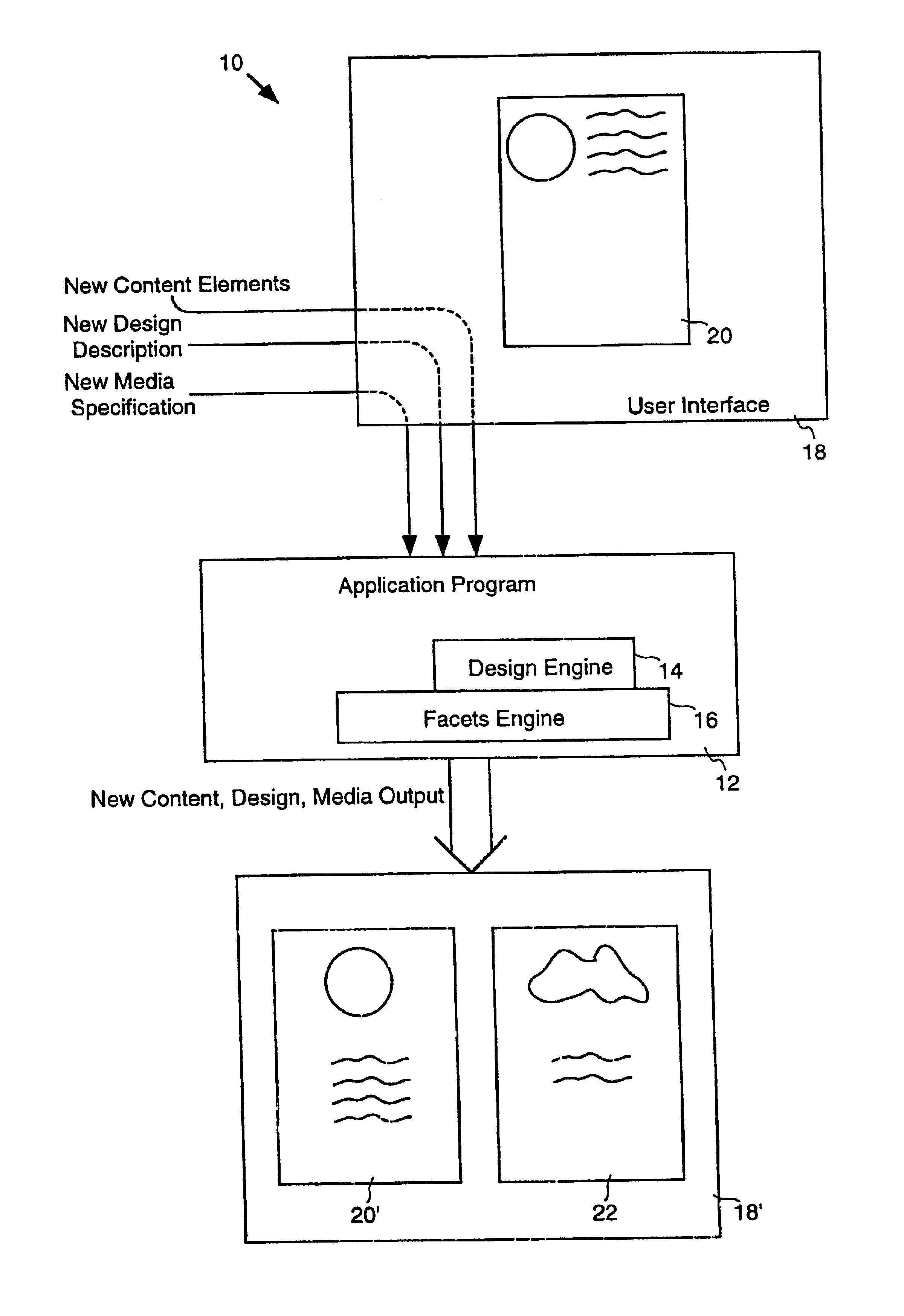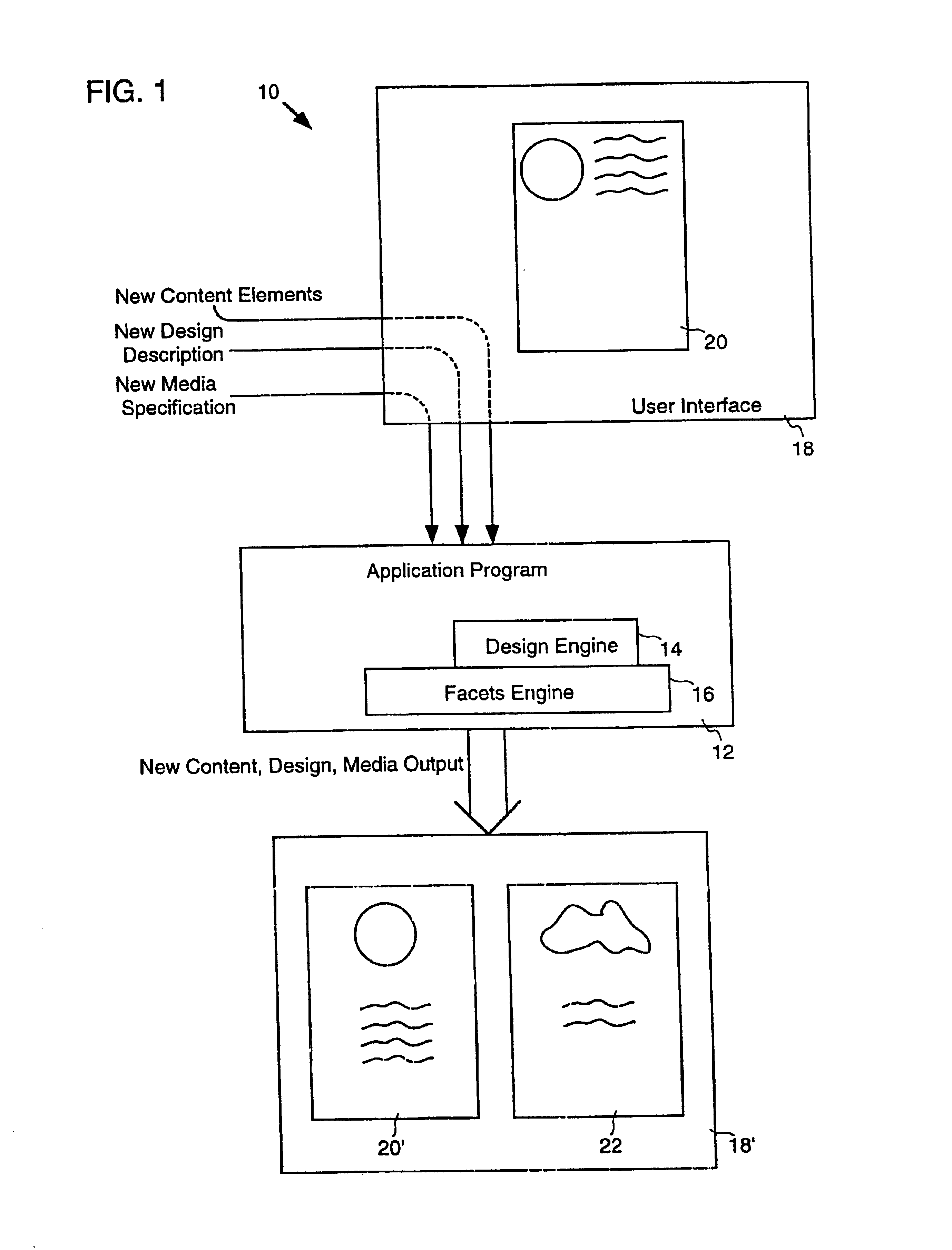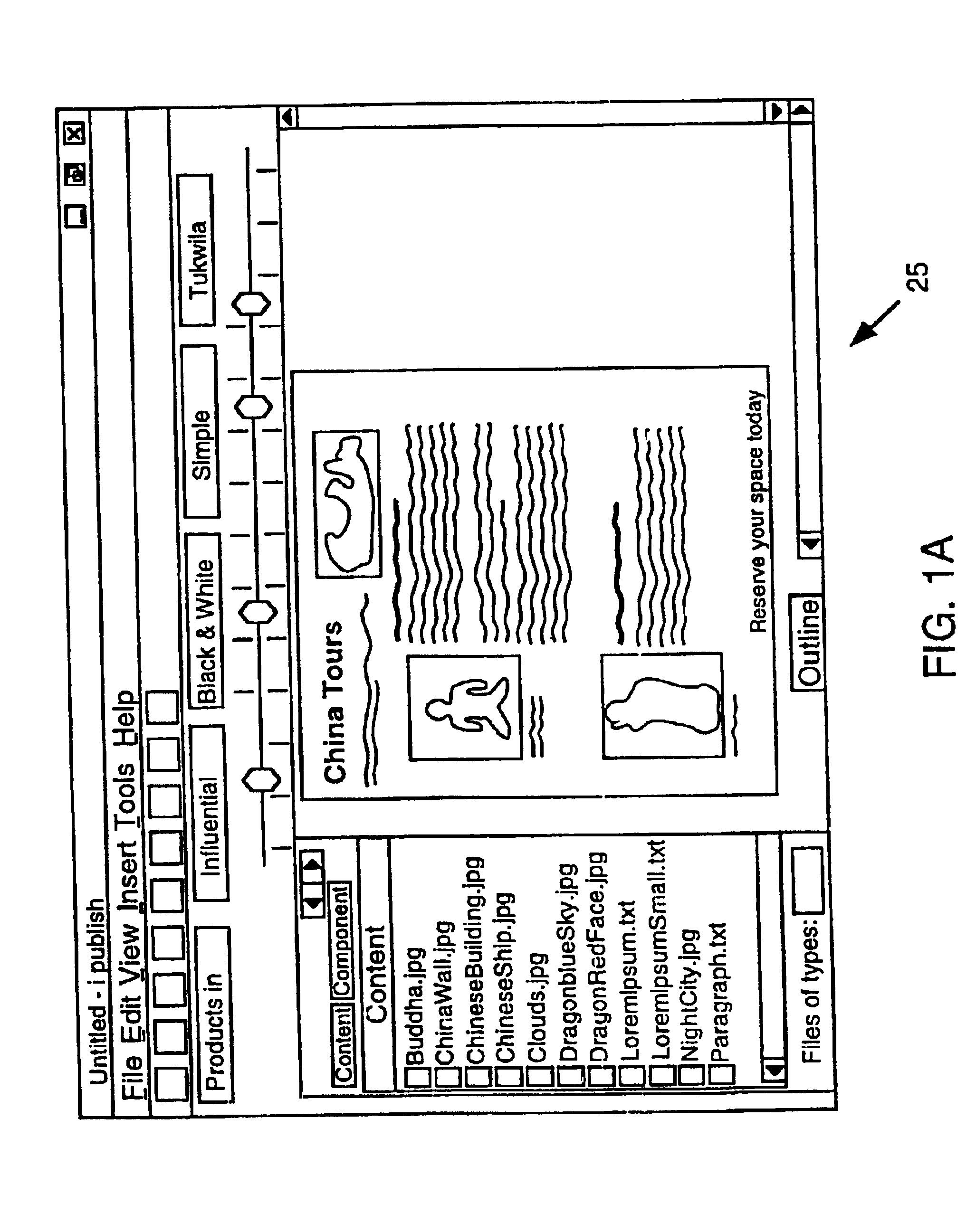Automatic layout of content in a design for a medium
a technology of content layout and content, applied in the field of data processing by a computer system, can solve the problems of not having the time or the tools needed to enhance the design and computer expertise of business audiences, not designed to facilitate sophisticated document formatting, and no longer attract the attention of increasingly sophisticated business audiences
- Summary
- Abstract
- Description
- Claims
- Application Information
AI Technical Summary
Benefits of technology
Problems solved by technology
Method used
Image
Examples
Embodiment Construction
[0064]The present invention relates to a number of features that facilitate automatic and dynamic composition and recomposition of program objects including design descriptions, content elements, and output media specifications. Unlike conventional word processing, desktop publishing or Web authoring software, the present invention dramatically improves document production in at least three ways. The present invention is able to automatically integrate a wide variety of types and combinations of content (e.g., text, pictures, data, graphics, OLE objects, video, sound, etc.). Also, the invention automatically performs document layout, styling and fit of specified content elements into a selected design. Additionally, the invention is able to automatically reformat the content to a new document type or design, to support a wide variety of distribution mechanisms, including, for example, the printed page, a computer screen presentation, as an OLE embedded object, or via the Internet as...
PUM
 Login to View More
Login to View More Abstract
Description
Claims
Application Information
 Login to View More
Login to View More - R&D
- Intellectual Property
- Life Sciences
- Materials
- Tech Scout
- Unparalleled Data Quality
- Higher Quality Content
- 60% Fewer Hallucinations
Browse by: Latest US Patents, China's latest patents, Technical Efficacy Thesaurus, Application Domain, Technology Topic, Popular Technical Reports.
© 2025 PatSnap. All rights reserved.Legal|Privacy policy|Modern Slavery Act Transparency Statement|Sitemap|About US| Contact US: help@patsnap.com



